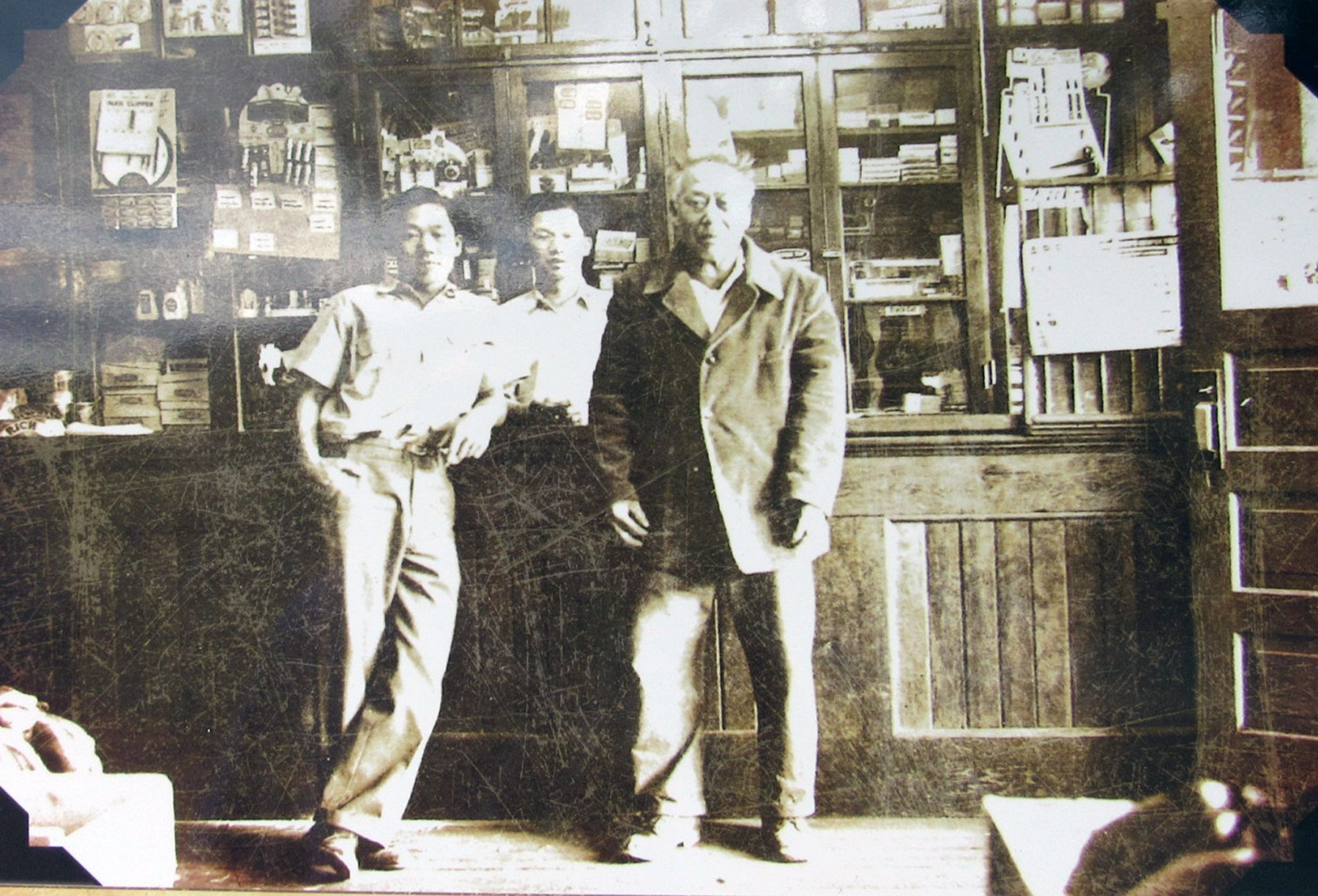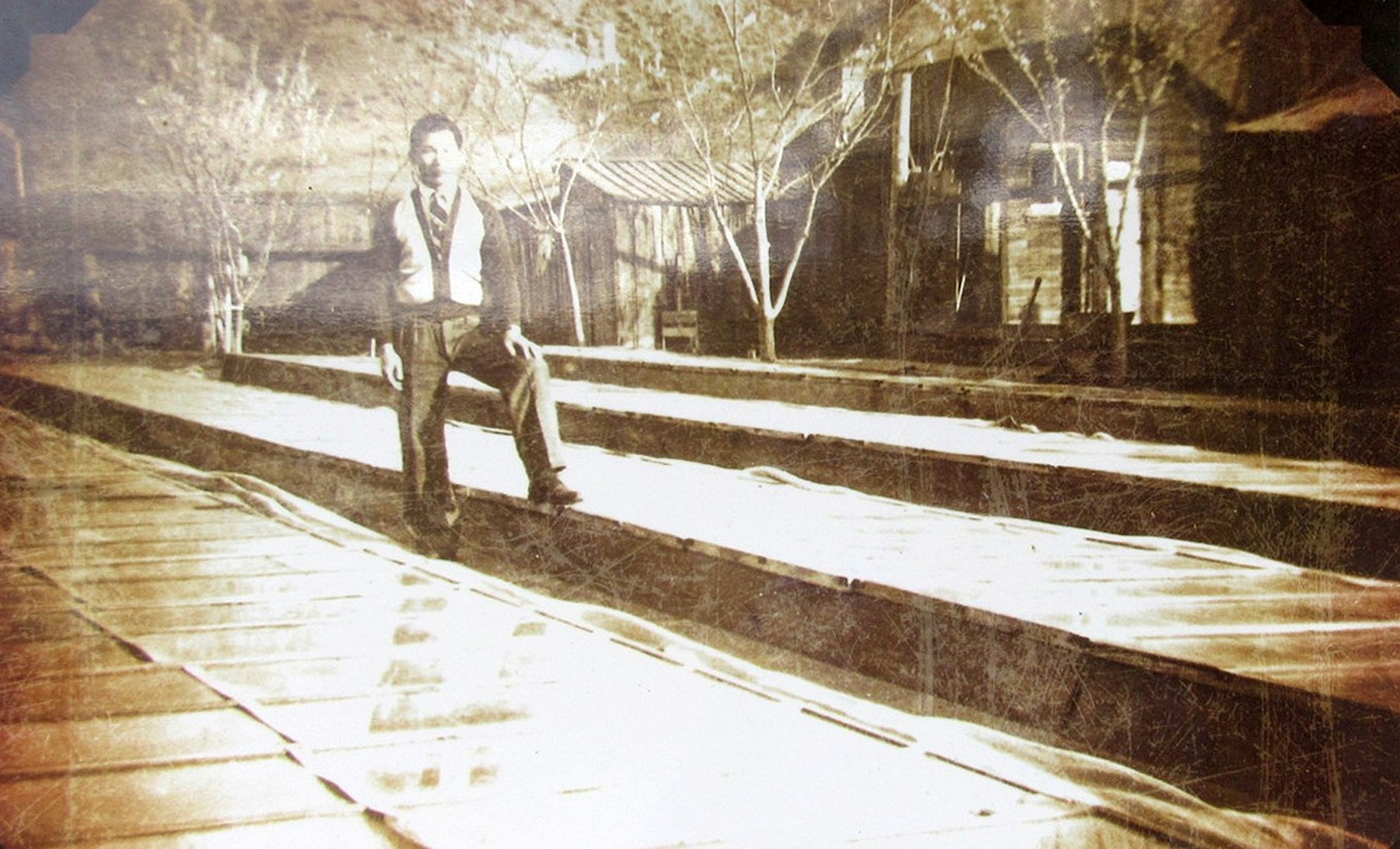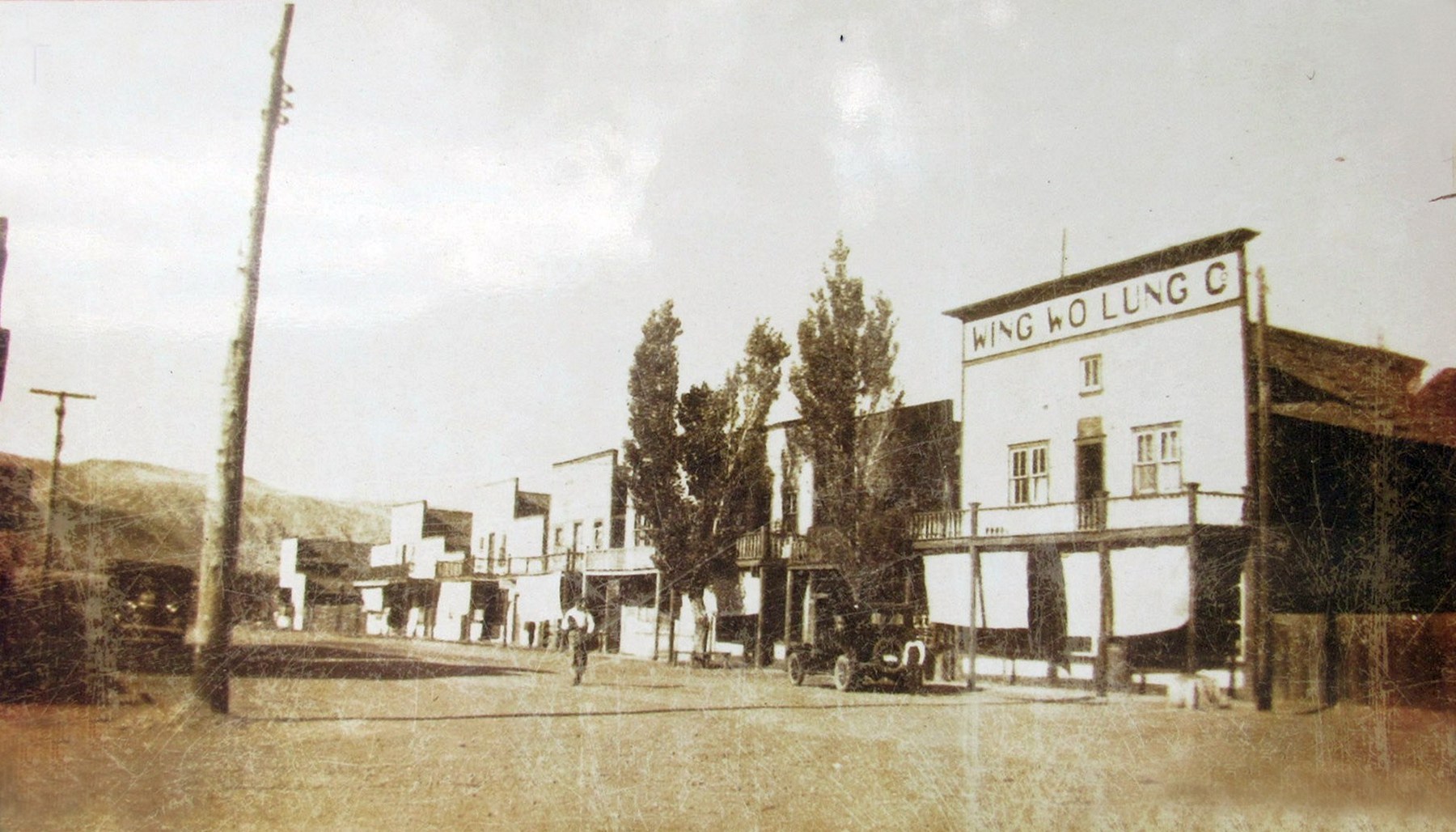
The Chow family (Mr. Chow and two of his sons are shown here) operated the Wing Chong Tai ("Forever Great Prosperity") store from 1892-1982. It was one of the stores rebuilt after the 1916 fire.

Histories of the Chinese in BC almost totally ignore their contribution to the town of Ashcroft, and yet they comprised about half of the town's population before 1900. In this photo, a Chinese worker uses the traditional pole basket that was used to carry everything from building materials to vegetables.

These cold frames were constructed behind the Wing Chong Tai store to grow tomato bedding plants. Chinese merchants leased land from local ranchers and planted acres of vegetables during World War I. Irrigation water was brought in from mountain lakes by wooden flumes. They shipped hundreds of rail cars full of potatoes, white beans and onions. In 1925 a cannery was built in Ashcroft to process the tomatoes.

In Ashcroft, a group of Chinese residents pose in front of the Wing Chong Tai general store. Most Chinese preferred their traditional herbal remedies to western drugs, and the store stocked hundreds of herbs in small drawers in a large wooden cabinet at the rear of the store.

The Chinese business community was made up of over 20 storefronts, located at what is now the north end of Railway Ave. Although completely destroyed by the fire in 1916, they were all rebuilt and back in operation shortly afterwards.
Sponsors:

The Rotary Club of Ashcroft/Cache Creek

Ashcroft & District Lions Club

Canadian Pacific Railway
Acknowledgments:
Pat Foster, “Historic Ashcroft - For the Strong Eye Only”
The Village of Ashcroft, “Bittersweet Oasis - A History of Ashcroft and District”
Ashcroft Museum
Ashcroft Chinese Cemetery is located in the Thompson-Nicola Regional District. Though not currently active, the cemetery was neglected for decades. It was a period of over 15 years, that the dedicated members of the Chinese community, Ashcroft Rotary and Lion Club membership made possible the restoration of this historic cemetery completed in 2017.
Approximately 17,000 Chinese men were brought to British Columbia between 1881-1884 to work on the Canadian Pacific Railway. They were paid $1 per day, from which they had to purchase their own food, cooking and camp gear. White workers were paid $1.50 to $2 per day and were given room and board.
The Chinese workers were also given the more difficult and dangerous tasks, such as clearing and grading the roadbed, and blasting tunnels through the rocks. It is estimated that accidents, fires, landslides, dynamite blasts and lack of proper medical care killed at least 600 Chinese workers during that period of construction.
This cemetery on CPR owned land is the final resting place for many Chinese workers who helped build Canada's national railway.
This is the final resting place of at least 49 members of the Chinese community many of whom came here to help build the Canadian Pacific Railway. The Cemetery is on CPR property, and open to the public.